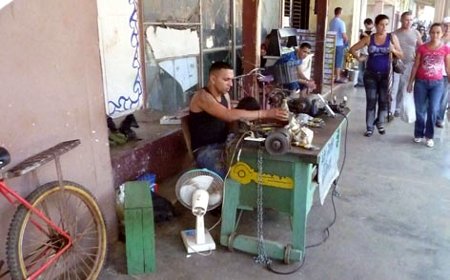When the flow of oil stopped (III): The reforms

After the collapse of the Soviet Union in June 1990, Cubans were uncertain about what the future would bring for them. The first reaction of the government to the unexpected crisis was to encourage savings, above all in energy and commodities, until the country could return to a “business as usual” situation.
Many thought the Special Period would be a temporary situation, with an estimated length of about 2-3 years. However the unfolding of events indicated that it would take years for Cuba to return to the level of social and economic development achieved during the 1980s.
Chapter 3: The reforms - By Fernando Martirena -  3_the_reforms.pdf 1.18 Mb
3_the_reforms.pdf 1.18 Mb
 Ch. 3: The reforms
Ch. 3: The reforms

